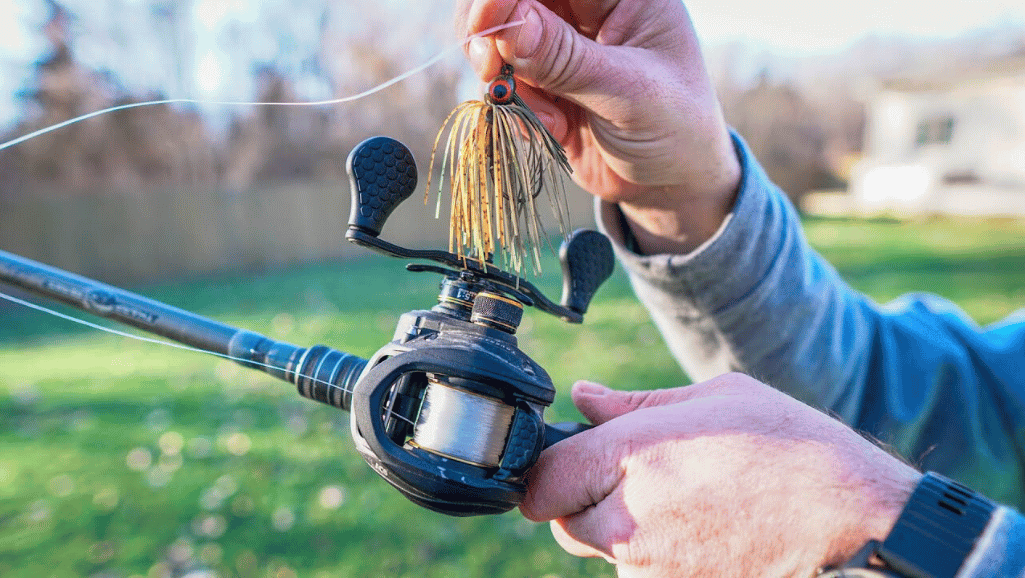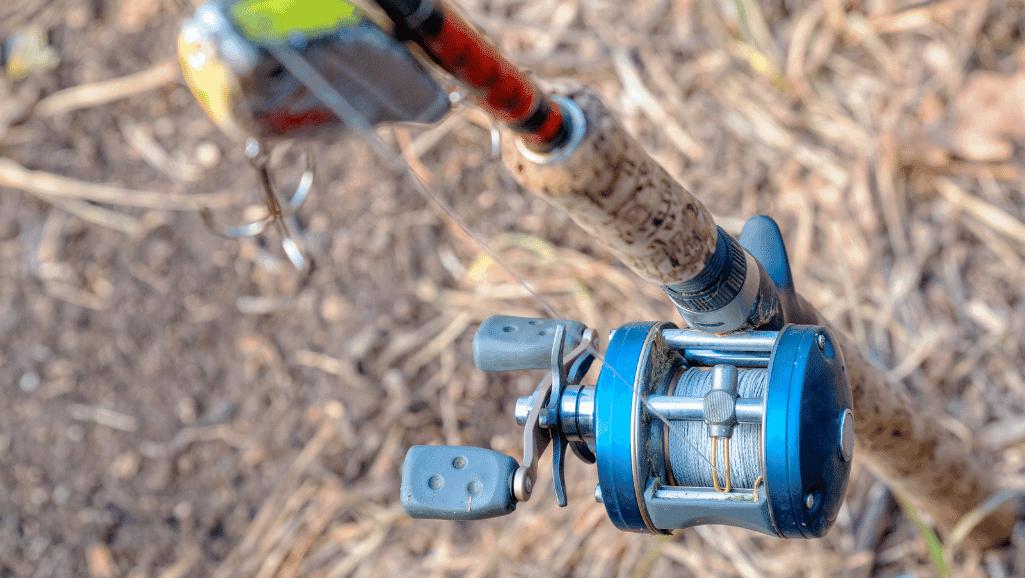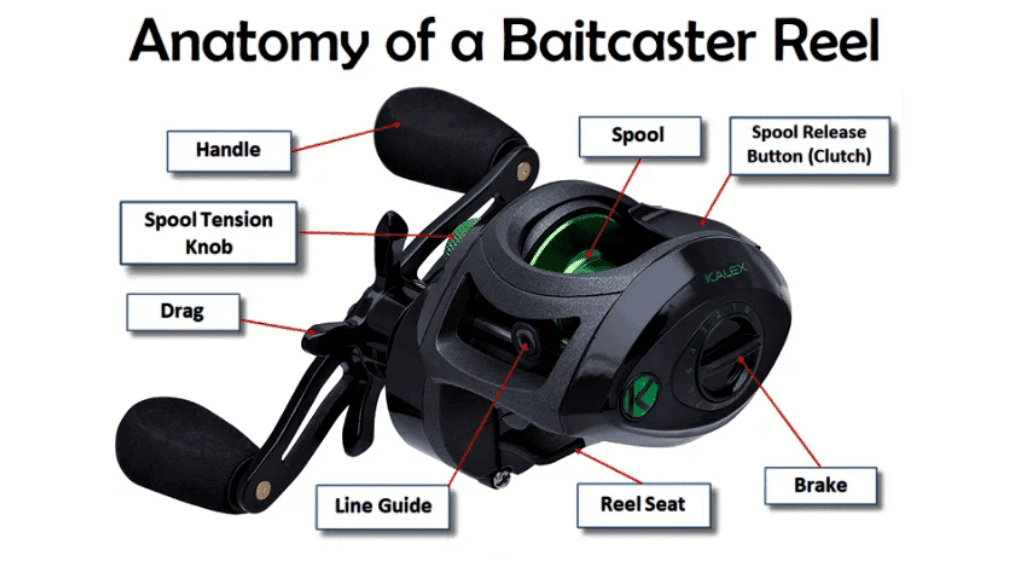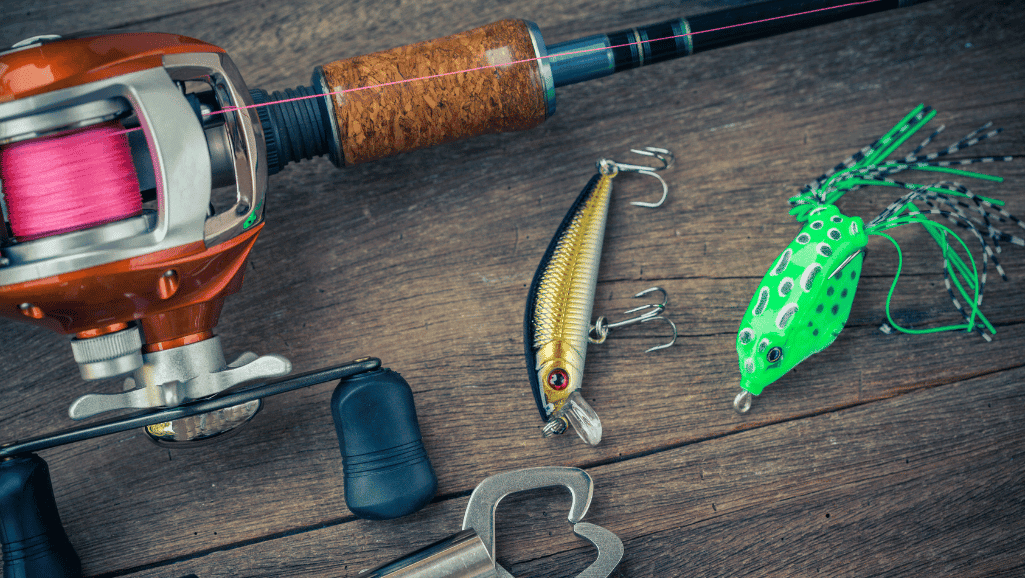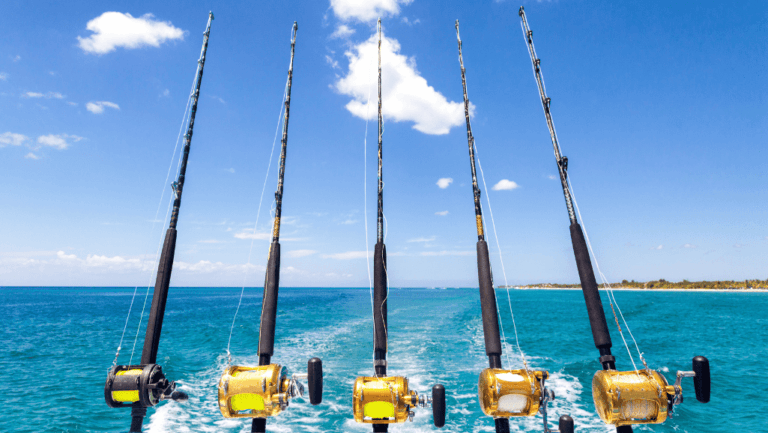Setting up a baitcasting reel is an essential skill for both novice and seasoned anglers, especially those targeting bass. Published on February 18, 2021, by Paul G., the original article suggests that a properly set up baitcasting reel can prevent frustrating pitfalls during fishing. This comprehensive baitcasting reel tuning guide is designed to smooth your fishing journey, focusing on three core elements: the spool tension knob, the braking system, and the drag. These elements are crucial regardless of the angler’s skill level and require patience and practice to master. A methodical step-by-step baitcasting reel setup ensures proficient casting and reel mastery over time.
Basic steps involve threading the line through the line guide of the reel and the first guide on the rod. Using a two-piece baitcasting rod can simplify setup by preventing the entire rod from swinging around. A notable tip includes pushing a pen through the spool’s center hole before spooling the line to maintain tension, and for ultralight baitcasters, a line counter can be affixed to the rod butt to measure the exact length of the line being added. Key options for attaching the line include single sliding loop knots like the arbor knot or multiple-wrap sliding knots for braided lines. It’s advisable to apply light pressure to the line spool while winding to avoid tangles.
Key Takeaways
- Setting up a baitcasting reel can prevent frustrating experiences during fishing.
- Threading the line correctly is a fundamental step in setup.
- Two-piece baitcasting rods can make reel setup more manageable.
- Applying light pressure when spooling the line helps avoid tangles.
- Patience and practice are key to mastering baitcasting reel setups.
Understanding Baitcasting Reels: An Overview
Baitcasting reels offer distinct advantages, including superior line control, which leads to more accurate casts compared to spinning reels. To achieve a proficient baitcaster setup for beginners, it’s essential to comprehend the various types of baitcasting reels and their components.
Types of Baitcasting Reels
Baitcasting reels are categorized primarily into barrel and low-profile designs. Barrel reels, known for their robust construction, are preferred for heavy-duty fishing. Low-profile reels, on the other hand, offer a more ergonomic design, making them suitable for lighter setups and finesse fishing.
Both right- and left-handed models are available to accommodate personal preferences. Notably, certain models are equipped with innovative technologies, such as the Zero Adjuster, which streamline the baitcasting reel maintenance tutorial and simplify initial setup processes.
Components of a Baitcasting Reel
A deeper understanding of the components of a baitcasting reel is crucial for an effective setup:
- Spool Tension Knob: This controls the spool’s resistance and can impact the timing of backlash during casting.
- Braking System: The braking system, which can be magnetic, centrifugal, or hybrid, affects the spool’s rotation as the lure travels through the air.
- Drag Control: A vital component for managing the fish during retrieval. Proper adjustment is essential for effective fish handling.
- Educated Thumb: Applying the correct pressure with the thumb helps manage the spool’s speed and mitigates potential backlash.
Understanding the interaction between these components allows for precision in casting and minimizes the risk of backlashes. Given that the weight of the bait impacts the adjustment needed on the baitcaster reel, practice and familiarity with these elements are key for a successful baitcaster setup for beginners.
Additionally, mastering the art of untangling a backlash involves careful pressure application and adept reeling techniques. Comprehending and applying these principles will aid in diagnosing casting technique issues, ensuring a smoother and more efficient angling experience.
Threading and Attaching Your Line
Properly threading and attaching the line is a meticulous process fundamental to achieving optimal performance from your baitcasting reel. Begin with selecting the right line, which varies based on your fishing conditions and the type of baitcaster reel you’re using.
Choosing the Right Line
The suitable line type significantly impacts your fishing success. Braided fishing line is a popular choice due to its strength-to-diameter ratio and stretch-free design. When using braided lines, it is advisable to employ a monofilament backing to prevent drag problems, backlash, and line slippage on the spool. Remember, choosing the right line can be the best way to set up a baitcaster for smooth and efficient performance.
Steps to Thread the Line
Threading the line onto your baitcasting reel begins with passing it through the rod guides and securing it to the spool. Here’s a detailed process:
- Run the line through each guide on your rod from the tip to the reel.
- Attach the line to the spool using a double-uni knot for braided lines or an arbor knot for other monofilament lines.
- Use a pen through the spool to maintain controlled tension while winding the line.
- Utilize a line counter for precise measurement, especially with ultralight baitcaster setups.
- Wet the braid as it is being wound onto the reel to ensure a neater laydown.
- Leave approximately one-eighth of an inch of space from the spool lip when spooling the line for smooth casting.
Following these baitcasting reel setup tips ensures that the line is attached correctly, influencing casting performance and reducing common issues such as backlashes and line twists. Pay attention to tension and avoid over-tightening, especially with BFS (Bait Finesse System) reels, as they are delicate and require careful handling.
Setting the Spool Tension Knob
Correctly setting the spool tension knob is essential for a proper baitcasting reel tune-up. This step ensures smooth, long, and accurate casts while preventing issues like backlashes.
Identifying the Spool Tension Knob
The spool tension knob is typically located near the reel handle. This knob controls the initial spool spin, making it crucial for preventing overruns. According to the guide “Setting Up a Baitcasting Reel: A Comprehensive Guide” by Paul G, identifying this knob is the first step in the adjustment process.
Adjusting the Spool Tension
Learning how to adjust a baitcasting reel involves precise calibration of the spool tension knob. It is recommended to start with the knob tightened, gradually backing off to find the optimal setting. By eliminating side-to-side spool play, you can achieve a controlled lure drop, which is indicative of the correct spool tension. The ultimate goal is to balance smooth casting without “chattering” or other interruptions, thereby streamlining the baitcasting reel tune-up process.
Adjusting the Braking System
Optimizing the braking system on a baitcasting reel is essential to prevent backlashes and ensure smooth casting. This baitcasting reel braking systems guide demystifies the different types of brakes and offers practical tips for their effective adjustment.
Magnetic Braking System
Magnetic brakes are a popular choice due to their ease of adjustment. Positioned on the side of the reel, a small dial allows anglers to fine-tune the magnetic force acting on the spool. This setup is particularly useful for addressing spool speed during the early stages of a cast. Start with a higher brake setting as a beginner and gradually lessen the force as your skill improves. This method helps in mastering casting techniques without severe line tangling.
Centrifugal Braking System
Centrifugal brakes function by controlling the speed of the spool through a series of brake pads, usually six, that can be individually adjusted. These brakes are activated by the centrifugal force exerted during casting. Adjusting these brakes involves carefully managing each pad to balance spool speed and prevent backlashes. You can incrementally reduce the brake force as you become more fluent with your baitcasting reel setup tips.
Hybrid Braking Systems
Hybrid braking systems combine the features of both magnetic and centrifugal brakes, providing greater versatility and control. Understanding how to manipulate these systems is crucial for optimizing reel performance. Properly setting these brakes not only enhances casting distance but also ensures precision and reduces the risk of backlashes. Utilizing this baitcasting reel braking systems guide can assist anglers in navigating the intricacies of hybrid systems effectively.
Effective brake adjustment, in tandem with spool tension, plays a significant role in proficient baitcasting. By mastering these baitcasting reel setup tips, anglers can achieve longer and more accurate casts, significantly enhancing their fishing experience.
Fine-Tuning the Drag
Mastering the drag system on your baitcasting reel is an essential step in ensuring successful fishing trips. A well-adjusted drag allows you to handle fish more effectively post-capture, which is particularly crucial in bass fishing due to the species’ elusive nature. The drag system, typically a star-shaped dial on the handle side of the reel, requires careful calibration based on several factors.
Setting the Drag for Different Baits
Different fishing situations and bait types call for specific baitcasting reel drag adjustment. For heavy-duty fishing, such as punching through dense vegetation, a tight drag is necessary. This setting ensures you can pull hefty bass out of cover without risking a line break. Conversely, when using delicate treble-hook baits, a lighter drag is recommended to prevent the hooks from pulling out during a fight. Fine-tuning the drag is often a matter of trial and error, but once you find the optimal setting, it can drastically improve your fishing efficiency.
Troubleshooting Drag Issues
Issues with drag settings can hinder fishing success. If your drag is too tight, you risk breaking your line, especially when using lighter tackle. On the other hand, if the drag is too loose, you’ll struggle to set the hook effectively. To ensure the drag is set appropriately, consider the strength of your line and the weight of your bait. For instance, heavier lines can handle tighter drag settings, while lighter lines require a more delicate approach. Periodically reassess and adjust the drag throughout your fishing day to accommodate changing conditions. Expert tips for baitcasting reel setup often emphasize the importance of these small but significant adjustments.
In sum, perfecting the drag on your baitcasting reel involves understanding the interplay between baitcasting reel drag adjustment and the specific demands of your fishing strategy. Whether you’re using robust baits or fine-tuning for delicate presentations, mastering drag settings will significantly enhance your angling prowess. Always be prepared for on-the-fly adjustments to adapt to evolving fishing conditions and ensure your drag setup aligns with your overall fishing objectives. For a detailed guide on optimizing your drag setup, consider checking out expert resources like this comprehensive baitcasting reel tuning guide.
Best Practices for Spooling Line
Ensuring your baitcasting reel is correctly spooled is a vital aspect of baitcasting reel maintenance tutorial. Proper spooling sets the foundation for successful angling, minimizing line twists and tangles while enhancing casting performance.
Winding Line onto the Spool
Begin by selecting the right type of line for your fishing conditions. Most experts suggest filling casting reels between an eighth of an inch from the top and all the way to the top, while spinning reels should be filled up to the top. This guideline ensures optimal performance. When spooling, employ a helper or a pen through the spool to manage the line tension evenly and avoid twists.
Avoiding Line Twists and Tangles
Effective baitcasting reel line management involves various techniques to prevent line disruptions. One highly recommended practice is using monofilament or fluorocarbon backing before spooling braid. This not only controls costs but also prevents braid slippage and tangling. To avoid backlashes, novices should initially keep all adjustments tight and gradually loosen as they become more proficient.
Another critical adjustment for preventing backlashes is fine-tuning the Spool Tension Knob. Ensure the lure drops slowly when releasing the Thumb Bar, a method proven to reduce line entangling issues. Ensuring a full spool is essential for achieving long, accurate casts, directly linking line capacity to casting success.
| Technique | Purpose |
|---|---|
| Controlled Tension | Prevents twists and ensures even distribution |
| Using Backing | Cost-saving and prevents braid slippage |
| Fine-tuning Tension Knob | Avoids backlashes and improves performance |
| Full Spool | Achieves long, accurate casts |
Pro Tips: Setting Up a Baitcasting Reel
Mastering the setup of a baitcasting reel involves nuanced techniques to optimize performance. Here are some expert tips for baitcasting reel setup to enhance your fishing experience:
1. Fine-Tune Spool Tension: The spool tension knob is a critical component found on most baitcasters. It controls the force needed to start the spool spinning. For the first cast, tighten all controls, then gradually adjust based on your experience. The goal is smooth, long, and accurate casts. Adjusting spool tension involves minimizing side-to-side play and then backing off slightly for ideal performance.
2. Brake System Adjustments: Baitcasting reels come with either magnetic or centrifugal braking systems. These systems control the spool’s speed at the end of the cast. Starting with the brake set at around 40% (4 out of 10) is recommended. Adjust as needed to prevent backlash and achieve optimal casting performance. Setting the braking system slightly below halfway helps manage the spool speed effectively.
3. Perfect Your Drag Setting: The drag control, typically managed by the starfish-shaped device on the handle, is essential for fish handling during retrieval. Adjusting the drag based on the type of bait, fishing line, and conditions is crucial. For lighter pound test fluorocarbon, set the drag to allow the line to be pulled with less effort, while heavier braid may require a tighter drag setting. Proper drag adjustments can be the difference between a successful capture and a missed opportunity.
4. Streamline Line Spooling: Proper spooling avoids tangles and ensures neat line laying. Wetting braid before winding helps it lay more evenly. Additionally, maintaining tight but not overly pressured spooling prevents spool damage. Rotating the line spool while winding also prevents tangling, leading to a more efficient setup.
By incorporating these expert tips for baitcasting reel setup and refining your approach with continuous practice, you will master the intricacies of baitcasting reel tuning guides, achieving greater casting accuracy and overall fishing success.
Common Mistakes to Avoid when Setting Up a Baitcaster
Setting up a baitcasting reel can be daunting for beginners, and avoiding common baitcaster setup mistakes is crucial for a successful fishing experience. One frequent error is over- or under-tightening the spool tension knob. Adjusting the spool tension to eliminate side-to-side play is essential to achieve smooth, long, and accurate casts. Ensuring the knob is neither too loose, causing chatter, nor too tight, shortening the cast, is key.
Another mistake is improper brake adjustment, leading to frequent backlashes. Although no magical setting exists to eliminate backlashes, understanding and adjusting the braking system can significantly reduce their occurrence. Novice anglers often overlook the importance of controlling the winding process while spooling the line, which can prevent tangles, twists, and potential spool damage.
- Begin by setting spool tension and brakes to higher settings, then gradually decrease as you become adept.
- Consult professional insights, such as Mark Menendez’s advice, stressing the significance of brake and spool tension adjustments.
Incorrect line spooling is another common issue. Proper line attachment, either through a single sliding loop (like Arbor or Uni knots) or multiple-wrap sliding knots for braided lines, is crucial. Additionally, using a controlled spool for adding line and employing a line counter on ultralight baitcasters helps manage the line’s length and tension efficiently. Over- or under-tightening while spooling can lead to tangles and damage, especially with ultralight spools.
Addressing these baitcasting reel setup tips enhances casting accuracy and minimizes backlashes, allowing for a more enjoyable fishing experience. Avoiding these common pitfalls will enable both novice and seasoned anglers to make the most of their baitcasting reels.
Conclusion
The journey of mastering a baitcasting reel setup harmoniously integrates the fundamental practices elucidated through this guide. Anchoring on the three vital features—spool tension knob, braking system, and drag—the guide underscores their collective importance in fostering precision and efficiency. Each step, from tightening the spool tension knob to setting the drag for various fishing scenarios, plays a critical role in an angler’s success.
Initial setups involve maxing out casting controls for shorter, more controlled casts, thereby minimizing backlashes. As skill levels improve, fine-tuning each control becomes essential. Whether it’s adjusting the spool tension with a 1/2-ounce jig until the bait descends correctly or calibrating the braking system to around 40% initially, each adjustment refines the angler’s capability. Likewise, learning to set the drag by understanding the forces needed for effective fish retrieval enhances the baitcasting reel setup for beginners.
Ultimately, this baitcasting reel guide articulates that practice and continuous adjustment are at the heart of proficient baitcasting. By methodically applying the principles of control settings, anglers can confidently advance their technique, leading to rewarding fishing experiences marked by fewer setbacks and more triumphant catches. The synthesis of these detailed practices lays the foundation for mastery in baitcasting reel setups, making the entire process a fulfilling and successful endeavor.

